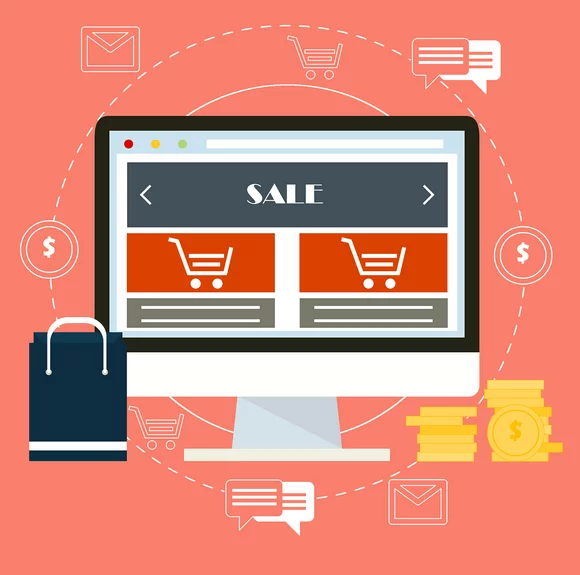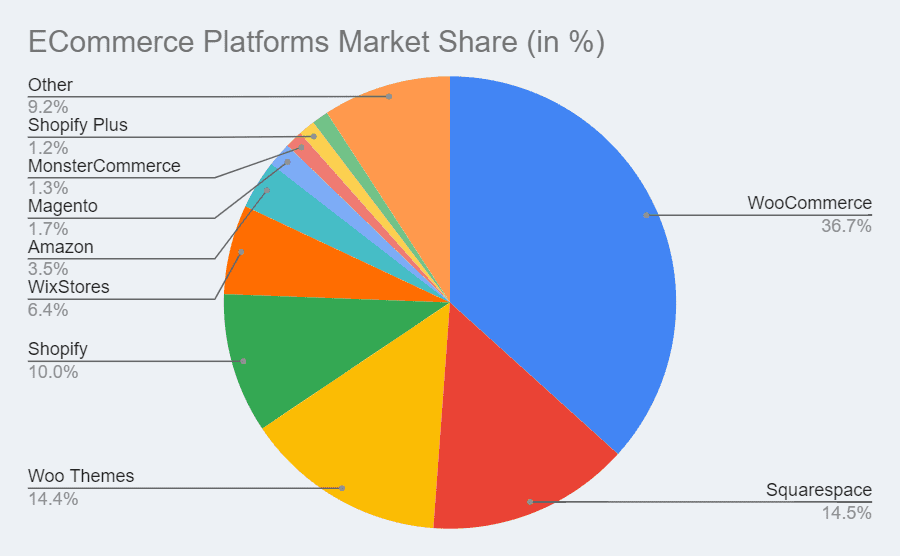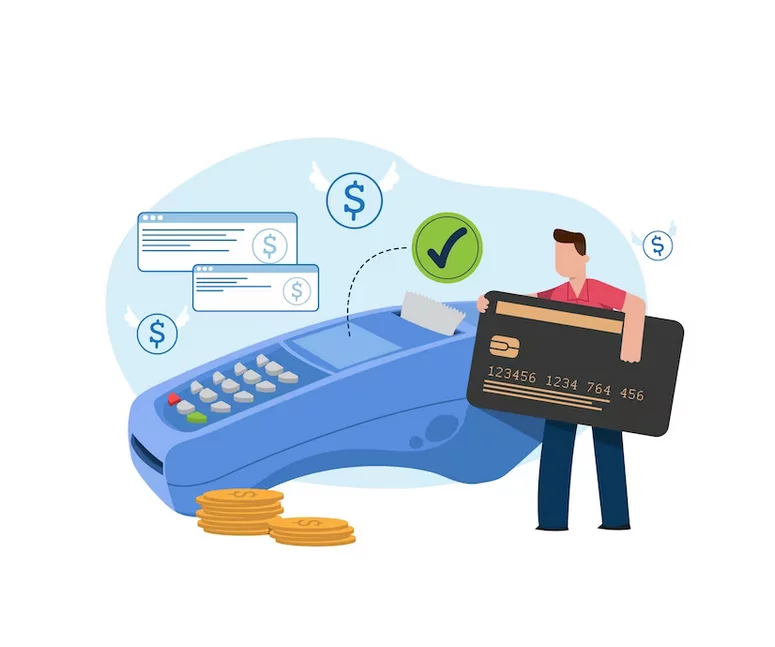In recent years, dropshipping has emerged as a popular business model for those looking to establish their presence in the competitive world of online commerce. This model offers entrepreneurs the freedom and flexibility to operate e-commerce stores without the encumbrances of inventory management and the complexities of shipping logistics. Nevertheless, the pivotal decision lies in selecting the right platform for launching and managing a dropshipping business. In this comprehensive blog post, we embark on a journey to explore whether WooCommerce, in particular, is a suitable choice for your dropshipping venture.
Understanding the Essence of Dropshipping

To set the stage for a comprehensive examination of WooCommerce’s suitability for dropshipping, let’s first elucidate the foundational concepts of dropshipping. In essence, dropshipping is a business model that differs from traditional retail paradigms. Under the dropshipping model, the retailer refrains from stocking products in their inventory. Instead, when a customer places an order, the retailer, in turn, procures the product from a third-party supplier, who subsequently ships the item directly to the end customer. This streamlined approach obviates the need for inventory management and significantly reduces the initial capital expenditures that typically plague conventional e-commerce enterprises.
Meet WooCommerce: Powering E-Commerce on WordPress

Now, let’s turn our attention to WooCommerce, a prominent player in the realm of e-commerce. WooCommerce stands out as an e-commerce plugin meticulously designed to seamlessly integrate with WordPress websites. Its extensive adoption is a testament to its capabilities, powering over 30% of all online stores. The platform is replete with a vast array of features and functionalities that equip online merchants to create and manage their digital storefronts with remarkable efficacy.
Steps to Use WooCommerce for Dropshipping:
1. Choose a Domain and Hosting

Choosing the right domain and hosting for your WooCommerce dropshipping store is the initial and pivotal step in ensuring a strong online presence. Here’s how to approach it:
Domain Selection: Your domain name is your digital identity. It should reflect your business, be memorable, and easy to spell. To find and register a suitable domain, consider using a reputable domain registrar like Namecheap or GoDaddy. Ensure it aligns with your niche and is easy to remember.
Reliable Hosting: To provide a smooth and reliable shopping experience for your customers, you need dependable hosting. Opt for a hosting provider like Nestify known for their excellent uptime, customer support, and scalability. This is crucial, especially as your business expands.
2. Install WordPress and WooCommerce

Most reputable hosting providers streamline the setup process through a one-click installation option for WordPress. This approach greatly simplifies the procedure for getting your website up and running. Here’s a detailed breakdown of how to go about it:
a. Access Your Hosting Account: Begin by logging into your hosting account using the login credentials provided by your hosting provider. Typically, hosting providers grant access to a control panel, often referred to as cPanel, where you can manage your hosting services.
b. Navigate to the Control Panel: Within your hosting account, locate the control panel, which serves as the control center for managing your website and server settings.
c. Choose WordPress: Look for the “One-Click WordPress Installation” option, which is generally prominently displayed in the main dashboard of your hosting control panel.
d. Select Your Domain: During the installation process, you will be prompted to select the domain on which you want to install WordPress. Ensure you choose the appropriate domain if you own multiple domains.
e. Configure WordPress Settings: You will be asked to set up some fundamental settings for your WordPress installation. This includes defining your site title, choosing a username, and creating a secure password. These details are essential for accessing your website’s administrative area, so take care in selecting them.
f. Initiate the Installation: After configuring the settings, press the “Install” or “Submit” button to trigger the installation process. The hosting provider’s system will handle the download and configuration of WordPress on the selected domain.
g. Access Your Website: Once the installation is successfully completed, you will receive a confirmation message that includes a link to your newly created website. This link typically follows the format of www.yourstore.com or yourstore.com/wp-admin.
3. Select a WooCommerce-Compatible Theme

The choice of your website theme holds great significance. It should harmonize with your specific niche and seamlessly integrate with WooCommerce. Consider well-liked themes like Astra, Flatsome, and Storefront, as they offer outstanding compatibility and flexibility. These themes empower you to tailor your store’s look to align perfectly with your brand’s identity.
4. Install Dropshipping Plugins
To streamline your dropshipping operations, you’ll need to install and configure dropshipping plugins. These plugins are essential for managing the connection between your store and your suppliers. Here are some popular options:
a. AliDropship: This plugin is designed for those who want to source products primarily from AliExpress. It allows you to import products, set pricing rules, and automate the ordering process.
b. WooCommerce Dropshipping: This is a WooCommerce extension that simplifies the management of your dropshipping business. It provides features for importing products, tracking inventory, and processing orders efficiently.
c. Oberlo: If you plan to work with suppliers on Shopify, Oberlo is a popular choice. It seamlessly integrates with your Shopify store, enabling you to import products from the Oberlo marketplace and manage them with ease.
d. WooCommerce Advanced Product Importer: This plugin allows you to import products from various suppliers, and it supports XML, CSV, and JSON file formats. It’s a versatile tool for managing product data.
Once you’ve installed the relevant plugin, it’s important to configure it to match your business needs. This typically involves the following steps:
a. Supplier Connection: Link your online store to your chosen suppliers. This may require adding supplier information or API keys to establish a connection.
b. Product Import: Use the plugin to import products from your suppliers’ catalogs. You can often filter products based on categories, pricing, or other criteria.
c. Pricing Strategy: Set up pricing rules that determine how much you’ll sell each product for. These rules can include markup percentages and currency conversion, if necessary.
d. Automated Order Fulfillment: Enable order automation, allowing the plugin to automatically place orders with your suppliers as customers purchase products from your store. This helps streamline the order fulfillment process.
5. Import Products

Once you have successfully installed the relevant plugin, it’s imperative to tailor its settings to align with your specific business requirements. This typically involves a series of steps:
a. Supplier Connection: Establish a seamless link between your online store and your selected suppliers. This may entail inputting supplier information or integrating API keys to create a solid connection that enables the smooth flow of information and products.
b. Product Import: Utilize the capabilities of the plugin to import products directly from your suppliers’ extensive catalogs. You can often refine your import process by filtering products based on various criteria such as categories, pricing, or other parameters to ensure your offerings are well-organized and appealing to your target audience.
c. Pricing Strategy: Develop and implement pricing rules that dictate how you will price each product within your online store. These rules may encompass markup percentages, currency conversion, or other factors relevant to your pricing strategy. This ensures that your product prices are competitive and reflective of your profit goals.
d. Automated Order Fulfillment: Enhance operational efficiency by activating order automation features. With this functionality enabled, the plugin takes care of the intricate task of placing orders with your suppliers in an automated manner as customers make purchases from your store. This automation is instrumental in streamlining the order fulfillment process, ensuring a seamless experience for both you and your customers.
6. Optimize for SEO

With your products now available in your store, it’s of paramount importance to make certain that potential customers can easily discover your online presence through search engines. Here’s a comprehensive guide on how to achieve this:
- SEO-Friendly Product Descriptions:
a. Keyword Research: Start by conducting keyword research to identify relevant search terms and phrases. Tools like Google Keyword Planner and SEMrush can assist in this process.
b. Optimize Product Titles: Craft product titles that are descriptive and incorporate target keywords strategically. This helps search engines understand the content of your product listings.
c. High-Quality Product Descriptions: Write detailed and informative product descriptions. Include benefits, features, specifications, and unique selling points. Naturally integrate chosen keywords into these descriptions.
- On-Page SEO Optimization:
a. SEO Plugin: Install an SEO plugin like Yoast SEO (for WordPress) or an equivalent for your platform. These plugins provide guidance on optimizing individual pages, products, and your website as a whole.
b. Optimize Meta Titles and Descriptions: Customize the meta titles and meta descriptions for your product pages. These elements are what appear in search engine results and directly impact click-through rates.
c. Clean URL Structure: Ensure your website’s URLs are clean and concise, including relevant keywords where appropriate. A clear and organized URL structure is more search engine-friendly.
d. Internal Linking: Implement internal linking by connecting related products or pages within your website. This not only aids in SEO but also enhances the user experience.
e. Image Optimization: Compress and optimize product images, and add descriptive alt text that includes keywords. This can enhance your website’s loading speed and make it more accessible to search engines.
- Regular Content Updates:
Search engines favor websites that provide fresh and relevant content. Therefore, it’s beneficial to maintain a blog or news section on your e-commerce site where you can regularly publish articles, news, or product updates. This keeps your site dynamic and provides more opportunities for keyword optimization and increased search engine visibility.
- Monitor and Adjust:
SEO is an ongoing process. Regularly monitor your website’s performance using tools like Google Analytics and Search Console. Keep an eye on your search rankings, click-through rates, and organic traffic. Adjust your SEO strategy as needed to continually improve your online store’s visibility in search engine results pages.
7. Set Up Payment Gateways

To ensure seamless transactions and accommodate various customer preferences, it’s crucial to offer diverse payment options. Here’s how to set up your payment gateways:
Diverse Payment Options:
- PayPal: Configure PayPal as a payment option. It’s widely recognized and trusted by customers. You can get started with PayPal here.
- Stripe: Set up Stripe to accept credit card payments. Stripe is known for its user-friendly integration and robust security features. Get started with Stripe here.
- Other Payment Methods: Depending on your target audience, you might want to explore additional payment methods like Apple Pay, Google Pay, or specific regional payment gateways. WooCommerce, if you’re using it, offers various payment plugins that can be easily integrated.
8. Secure Your Site

Security is paramount in e-commerce. Protecting customer data and your business is a top priority. Here’s how to enhance your website’s security:
Enhance Security:
- SSL Certificate: Ensure your website is equipped with an SSL certificate. It encrypts data exchanged between your site and customers, securing transactions and sensitive information. Most hosting providers offer SSL certificates. If you’re using WordPress, you can get a free SSL certificate through Let’s Encrypt.
- Security Plugin: Employ a security plugin such as Wordfence for WordPress. These plugins offer a range of features, including firewall protection, malware scanning, and login attempt monitoring. Install Wordfence for WordPress here.
9. Market Your Store

With a secure store in place, the next step is to attract and retain customers. Effective marketing strategies are crucial for growth. Here’s a detailed approach:
Attracting Customers:
- Content Marketing: Create valuable content that addresses your target audience’s needs. Blog posts, product guides, and how-to articles can be used to attract organic traffic. Use SEO best practices to optimize your content for search engines. Learn more about SEO with resources like Moz.
- Social Media Promotion: Establish a strong social media presence where your audience is active. Regularly share content, engage with your followers, and run paid advertising campaigns. Learn social media marketing from resources like Hootsuite.
- Email Marketing: Build an email list of customers and prospects. Use email marketing platforms like Mailchimp or SendinBlue to send product updates, newsletters, and personalized offers. Get started with Mailchimp here and with SendinBlue here.
10. Monitor and Optimize

Launching your e-commerce store is just the beginning. Continuous assessment and improvement are essential for long-term success. Here’s how to approach this stage:
Continuous Assessment:
- Google Analytics: Regularly monitor your website’s performance using Google Analytics. Analyze data related to visitor behavior, sales, and traffic sources.
- Data-Driven Optimizations: Based on insights from your analytics, make adjustments to your product offerings, pricing strategies, and marketing campaigns. Identify areas for improvement and refine your strategy accordingly.
- Stay Informed: E-commerce is an evolving field. Stay up to date with industry trends, emerging technologies, and changes in consumer behavior. Keep an eye on industry news through platforms like E-commerce Times.
Benefits of Using WooCommerce for Dropshipping
When it comes to running a dropshipping business, WooCommerce offers several advantages that are tailored to the unique needs of dropshippers. Let’s delve into these benefits in detail:
1. Ease of Use:
- WooCommerce is renowned for its user-friendly interface, making it suitable for both beginners and experienced e-commerce entrepreneurs.
- The platform provides intuitive tools and a straightforward setup process.
- Installation of the WooCommerce plugin onto your WordPress website is a breeze, and it guides you step by step through the store configuration process.
- A user-friendly dashboard simplifies the management of products, orders, and customer information.
WooCommerce’s extensive documentation, tutorials, and online resources ensure that you can smoothly navigate through the setup process and troubleshoot any issues you may encounter. This user-friendliness, coupled with robust support, guarantees a seamless experience for dropshipping business owners.
2. Integration with Dropshipping Suppliers:
- An integral component of successful dropshipping is a seamless integration with your suppliers, and WooCommerce excels in this area.
- WooCommerce’s integration capabilities allow you to connect your store with a wide range of dropshipping suppliers and platforms.
- Through specialized plugins or extensions, you can effortlessly import product catalogs directly from your suppliers into your WooCommerce store. This eliminates the need for manual product entry, saving you time and effort.
- You can also automate the order fulfillment process, ensuring that customer orders are instantly forwarded to your suppliers for shipping.
Furthermore, WooCommerce offers features that enable you to manage multiple suppliers and track their inventory levels. This guarantees that you can provide your customers with accurate product availability information and prevent selling products that are out of stock.
3. Flexibility and Customization:
- WooCommerce provides a high degree of flexibility and customization options, allowing you to adapt your dropshipping store to align with your brand identity and customer preferences.
- With a wide variety of themes and plugins at your disposal, you can create an online store that is not only visually appealing but also highly functional.
- You can choose from various WooCommerce-compatible themes or design a custom layout that matches your brand’s aesthetics.
- Moreover, you can enhance your store’s functionality by integrating plugins that offer additional features such as advanced product filtering, customer reviews, or email marketing automation.
The ability to tailor your store ensures that you can offer a unique shopping experience to your customers. You can optimize the layout, navigation, and product presentation to boost user engagement and drive conversions. This flexibility positions WooCommerce as the ideal platform for dropshipping businesses looking to differentiate themselves in a competitive market.
4. Cost-effectiveness:
- WooCommerce presents a cost-effective solution for dropshipping businesses, particularly for entrepreneurs operating on a limited budget.
- The platform itself is open-source and free to download and use, providing a strong foundation for your online store.
- While there may be additional costs associated with premium themes, plugins, or extensions, the initial investment is significantly lower compared to other e-commerce platforms. This affordability makes WooCommerce an attractive option for dropshippers who aim to minimize upfront expenses.
Furthermore, as your dropshipping business expands, you have the flexibility to select from a wide range of add-ons and extensions that can enhance your store’s functionality. You can invest in additional features or tools based on your specific requirements and budget, enabling you to scale your business without incurring significant costs.
5. Community and Support:
- WooCommerce thrives on a vibrant community of developers, designers, and users who actively contribute to its development and provide support.
- This strong community ensures that you have access to a wealth of knowledge, resources, and assistance throughout your dropshipping journey.
- The official WooCommerce website offers extensive documentation, tutorials, and user guides to help you understand and effectively utilize the platform’s features.
- In addition, active forums and online communities provide platforms where you can seek advice, ask questions, and learn from experienced users.
The community-driven nature of WooCommerce ensures that you can find solutions to common issues, discover new strategies, and stay updated with the latest trends in dropshipping. The collective knowledge and support available ensure that you never feel alone in managing your dropshipping store with WooCommerce.
Potential Challenges and Solutions of Using WooCommerce for Dropshipping
While WooCommerce offers numerous benefits for dropshipping businesses, it’s important to be aware of potential challenges that may arise. In this section, we will discuss common challenges faced when using WooCommerce for dropshipping and provide solutions to overcome them.
1. Setting Up and Managing the Store:

- Challenge: Setting up and managing an online store can be daunting, especially for those who are new to e-commerce or have limited technical knowledge. Configuring the settings, adding products, and ensuring smooth operation can be time-consuming and overwhelming.
Solution: WooCommerce provides a user-friendly interface and offers extensive documentation and tutorials to guide you through the setup process. You can follow step-by-step instructions to configure your store, add products, and set up essential features. Additionally, there are numerous online resources and forums where you can seek assistance and learn from experienced users. Consider utilizing WooCommerce themes that are specifically designed for dropshipping to streamline the setup process further.
2. Finding Reliable Suppliers:

- Challenge: Finding reliable suppliers is crucial for the success of your dropshipping business. It can be challenging to identify trustworthy suppliers who consistently deliver quality products and timely shipments.
Solution: Conduct thorough research and due diligence to find reputable suppliers. You can explore established dropshipping directories, online marketplaces, or supplier networks to find reliable partners. Reach out to potential suppliers and ask for samples to assess the quality of their products. Additionally, consider reading reviews and testimonials from other dropshippers to gauge their credibility. Building strong relationships with your suppliers through effective communication and regular feedback can also help ensure a smooth working partnership.
3. Long Shipping Times:

- Challenge: Dropshipping often involves shipping products directly from suppliers to customers, which can result in longer shipping times compared to traditional retail models. Long shipping times may lead to customer dissatisfaction and affect your business reputation.
Solution: Be transparent with your customers about the expected shipping times. Clearly communicate the estimated delivery duration on your product pages and during the checkout process. Setting realistic expectations can help manage customer satisfaction. Additionally, consider working with suppliers who offer faster shipping options or explore local suppliers to reduce shipping times for specific regions. Regularly communicate with your suppliers to ensure timely order processing and shipment.
4. Managing Inventory and Orders:

- Challenge: As a dropshipper, you have to manage inventory levels and track orders efficiently to avoid overselling or running out of stock. It can be challenging to stay on top of inventory updates and ensure accurate order processing.
Solution: Utilize inventory management plugins or extensions available for WooCommerce. These tools can help you track stock levels, receive low stock notifications, and synchronize inventory with your suppliers. Automating the inventory management process can save time and reduce the risk of overselling. Additionally, consider setting up automated order notifications to keep customers informed of their order status, including tracking information.
Comparison of Using Dropshipping with WooCommerce, Shopify, Prestashop and Bigcommerce:
| Feature | WooCommerce | Shopify | PrestaShop | BigCommerce |
|---|---|---|---|---|
| Cost | Open-source, minimal cost for hosting and plugins | Monthly subscription fees, transaction fees for third-party payment gateways | Open-source, hosting costs, premium modules may require additional fees | Monthly subscription fees, transaction fees for third-party payment gateways |
| Customization | Highly customizable with a wide range of themes and plugins | Customizable through themes and apps, but limited compared to WooCommerce | Customizable through themes and modules | Highly customizable with themes and apps |
| Ease of Use | User-friendly, but may require some technical knowledge | User-friendly with an intuitive interface | May require more technical knowledge for advanced customization | User-friendly and easy to set up |
| Scalability | Scales well, suitable for small to large businesses | Scales well, suitable for small to large businesses | Scales well, suitable for small to large businesses | Scales well, suitable for small to large businesses |
| Dropshipping Integration | Compatible with various dropshipping plugins like AliDropship | Offers apps and integrations for dropshipping (Oberlo for Shopify) | Limited dropshipping-specific features, but integrations are available | Offers apps and integrations for dropshipping |
| SEO Friendliness | SEO-friendly with plugins like Yoast SEO | SEO-friendly with built-in tools | SEO-friendly with modules available | SEO-friendly with built-in tools |
| Payment Gateways | Supports multiple gateways including PayPal, Stripe, and more | Supports various payment gateways, may charge transaction fees | Supports multiple gateways with additional modules | Supports various payment gateways with transaction fees |
| Security | Provides basic security; additional security plugins available | Offers strong security features and SSL certificates | Basic security, additional modules available | Strong security features and SSL certificates |
| Customer Support | Community-based support, paid support options | 24/7 customer support, extensive documentation | Community-based support, paid support options | 24/7 customer support, extensive documentation |
| Hosting Requirements | Self-hosted, flexibility in choosing hosting | Hosted by Shopify, limited control | Self-hosted, flexible hosting options | Hosted by BigCommerce, limited control |
Conclusion:
Dropshipping with WooCommerce offers a promising avenue for aspiring e-commerce entrepreneurs to build and run successful online businesses. By leveraging the power of WooCommerce, a robust and customizable e-commerce platform, and integrating it with specialized dropshipping plugins, you can create a seamless and efficient operation.
FAQs on Dropshipping with WooCommerce:
Can I migrate my dropshipping business to WooCommerce from another e-commerce platform?
Possible Migration: Yes, it’s possible to migrate your dropshipping business to WooCommerce. There are plugins and services available that can facilitate the migration process.
Are there any transaction fees associated with WooCommerce for dropshipping?
WooCommerce Transaction Fees: WooCommerce itself does not impose transaction fees. However, you may encounter fees from payment gateways and any additional plugins or services you use.
How should I handle customer support in a dropshipping business?
Customer Support Matters: Excellent customer service is crucial. Communicate with your customers promptly, address their concerns, and ensure a smooth order fulfillment process.
What are the best practices for finding reliable dropshipping suppliers?
Reliable Suppliers: Research potential suppliers thoroughly. Look for established companies with good reputations. Consider ordering sample products to assess quality and shipping times.



